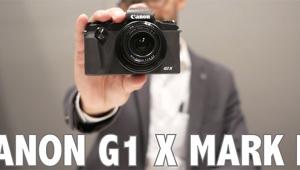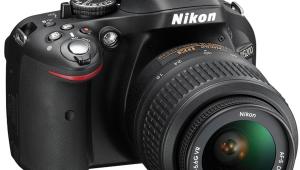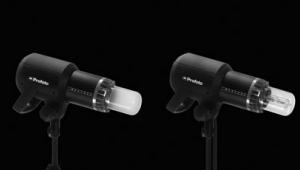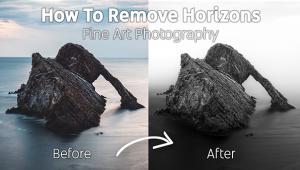Special Report: photokina
New Lenses For 35mm And Digital SLR Cameras
As digital SLR cameras grow in popularity, most manufacturers are working to develop additional lenses. An increasing number of the new products--primarily zooms--are designed exclusively for use with digital SLRs with the "APS-C" size sensors employed in most cameras. Such lenses (discussed in more detail later) are usually more compact because they need to cover only the smaller image circle of the smaller sensor. If used with a 35mm SLR, or a camera with a full-frame sensor (such as the Canon EOS-1Ds or Kodak Pro SLR) such lenses will produce vignetting, darkening at the edges, at some or all focal lengths. Naturally, some of the new products shown at photokina were multi-platform lenses, optimized for use with digital SLRs, but equally suitable for use with 35mm SLRs.
Digital-Optimization Technology
Virtually all new multi-platform lenses (and all digital-only lenses) are "digitally
optimized," but that expression is somewhat generic. The specific features
and technology used to achieve this goal varies from manufacturer to manufacturer.
Even within a single brand, the strategy can vary from extensive with a pro
lens, to minimal with an entry-level $199 zoom. Note, too, that the manufacturers
are somewhat secretive about proprietary technology as well as the specific
features applied to each of their digitally-optimized lenses.
But why do we need different lenses for digital SLRs than for 35mm cameras in
the first place? Well, we don't need them per se, because virtually all
conventional lenses will work for digital capture. On the other hand, they may
not provide the best possible results, because lenses designed for 35mm SLR
cameras pose a few problems in digital photography. These can be minimized or
eliminated with digitally-optimized lenses.
The first problem is increased internal flare that can degrade contrast. In
a worst-case scenario, "ghosting" can occur: reflections of the
lens diaphragm that can mar images. Those effects can be caused by the very
highly reflective nature of CMOS and CCD sensors and the protective glass cover
over the chips. (The surface of film is not nearly as reflective.) In order
to prevent these problems, multilayered antireflective coatings must be applied
to the rear lens elements as an absolute minimum. Superior coatings on all elements
are preferable and several optical manufacturers have developed new, more effective
chemicals for this purpose.
The second issue is more complicated but worth understanding. Digital cameras
produce the best results with light that strikes all the areas of an imaging
sensor at a 90Þ angle. With conventional wide angle lenses, light can
strike the edges of the sensor at increasingly more acute angles, reducing sharpness
at the edges of a photo. This effect does not occur with long lenses and may
be insignificant when any lens is used at a small aperture, such as f/11-f/22.
Finally, peripheral light falloff--darkening at the corners of the image--can
be quite serious with some conventional lens designs when used on a digital
SLR camera. Less light reaches pixels at the edges of the image area causing
vignetting. Very little information is available as to the optical technology
used to achieve "increased corner luminosity" by each manufacturer
and it probably varies, depending on the lens type and the steps required for
optimal results.
Note: Some digital SLR manufacturers employ in camera technology to minimize
vignetting and loss of sharpness at the edges of the frame. Nonetheless, even
those companies make digitally-optimized lenses, as well as digital-only lenses,
that should provide even better results with their APS-C size sensors.
None of the digital-optimization strategies produce an adverse effect in 35mm
photography. In fact, they should produce better silver-halide images: with
less contrast-degrading flare as well as high edge sharpness and brightness,
particularly when using short zooms at wide apertures. Does that mean that SLR
camera owners (digital or 35mm) should sell off all their conventional lenses
to buy digitally-optimized or digital-only models? Of course not. Still, the
benefits are worth considering if you're shopping for a new lens and want
superior image quality.
Multi-Platform Lenses
Sigma (www.sigma-photo.com)
already markets six DG (Digitally Optimized) lenses for 35mm and digital SLR
cameras, including three new models with wide apertures great for low-light
shooting at lower ISO settings. The 24-70mm F2.8 EX DG MACRO incorporates premium-grade
optics: two Special Low Dispersion (SLD) elements and three aspherical elements,
to control all types of aberrations. (Street price, $429.) Substantially smaller
and lighter (67mm filter; 18 oz), the new Sigma 28-70mm F2.8 EX DG zoom incorporates
similar high-grade optics plus Super Multi Layer (SML) coating to control flare
caused by highly reflective digital sensors. (Price not yet set.) A pro-grade
lens, the new Sigma APO MACRO 150mm F2.8 EX DG HSM allows for true life-size
or 1x magnification. Features include ultrasonic HSM focus motor in some mounts
with full-time manual focus override, two SLD elements plus a floating focus
system to correct for chromatic, spherical, and astigmatic aberration. (List
price, $749.)
 |
 |
- Log in or register to post comments
















































